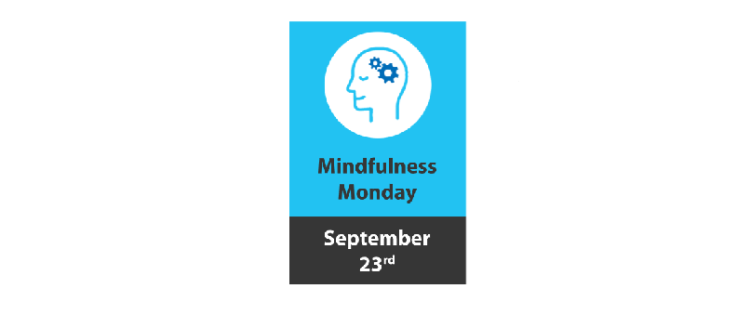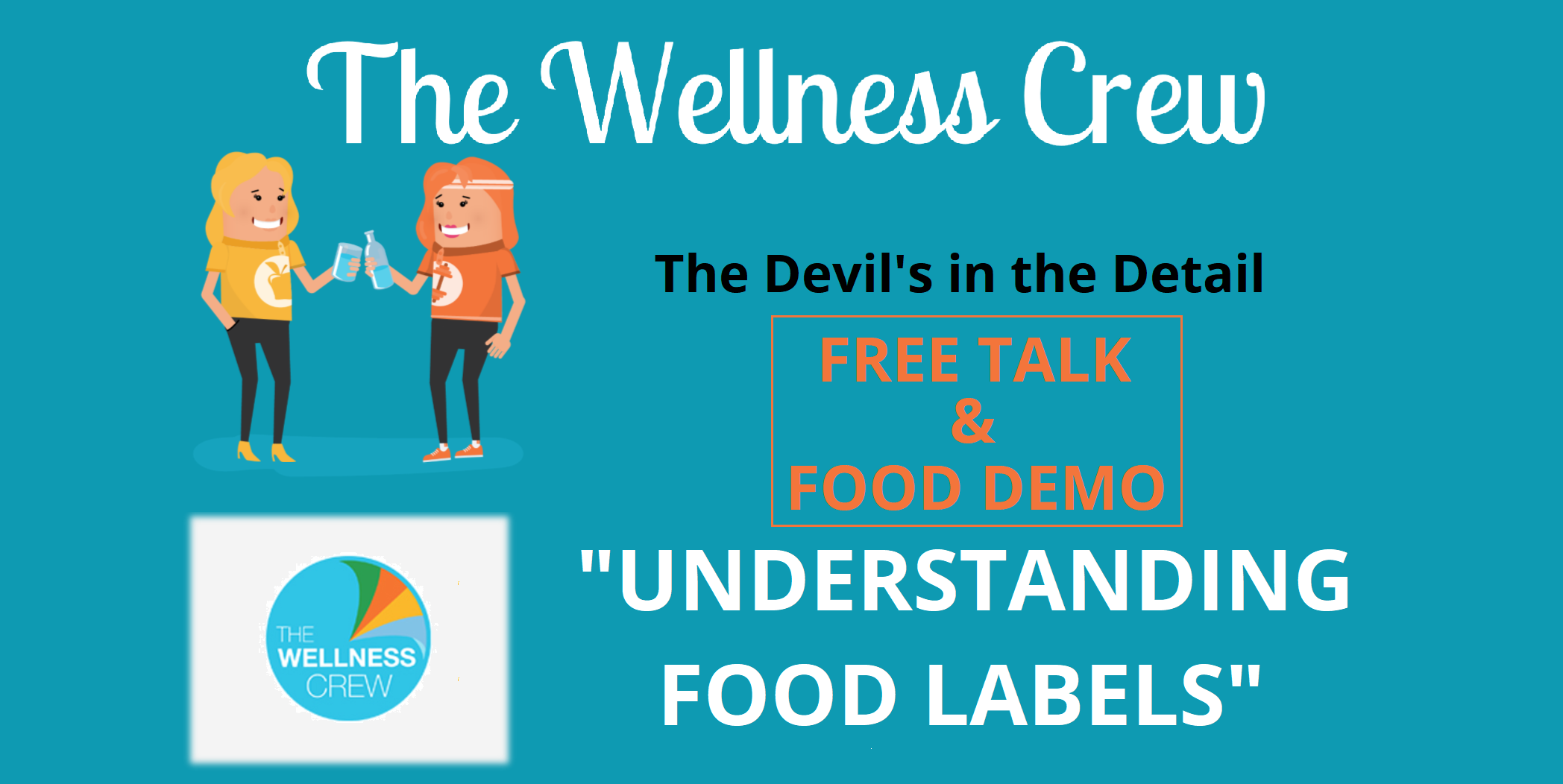Mindfulness Monday

Today’s Event
Understanding Food Labels

Today’s Articles

The Warning Signs Of Suicide
3 times more people die by Suicide in Ireland than die in road traffic accidents. These deaths are devastating for those left behind, for families and loved ones and entire communities. Yet Suicide is preventable.
You can’t always tell if a friend or loved one is considering Suicide, but there are some common signs to be mindful of that can indicate they may be at risk. Risk is higher if a behaviour is new, out of character or has escalated, or if it seems to be related to a painful or traumatic event, a loss or change. Sometimes they may not display clear “signs” but there may be some HINTS…. so if you are concerned about someone, follow your instincts – they are often right.
Common signs someone may be Suicidal:
- Displaying symptoms of clinical depression, a major risk factor for suicide;
- Talking about Suicide or wanting to die, e.g. “I wish I was dead”, “I can’t see any way out”;
- Talking about being a burden to others e.g. “Everyone would be better off without me”;
- Obtaining means or taking steps to find means to kill oneself, e.g. stockpiling medication, or buying rope or poisons;
- Withdrawing from others, wanting to be left alone
- Feeling hopeless, trapped in a situation or that there is no reason to live;
- Engaging in reckless behaviour, e.g. reckless driving, excessive drug or alcohol use;
- Sleeping too little or too much;
- Displaying extreme mood swings;
- Being severely anxious or agitated, particularly in combination with some of the signs above.
Additional Warning Signs:
- Preoccupation with death, dying or violence;
- Suddenly happier, calmer – this is sometimes a sign that the person has made the decision to take his or her own life;
- Loss of interest in things one cares about;
- Visiting or calling people to say goodbye;
- Giving away belongings, such as prized possessions.
- Making arrangements; tying up loose ends or setting one’s affairs in order for no apparent reason.
3Ts is a registered charity working to help prevent deaths by Suicide through research, intervention and support.
Need help? Are you feeling Suicidal?
Are you concerned about someone else?
3Ts | turn the tide of suicide | www.3ts.ie
Registered Charity No. 20054878. Revenue Charity No. CHY15710
Elm House, Leopardstown Office Park, Burton Hall Avenue, Dublin 18

Mindfulness at Treehouse
Dr Sara O’Byrne
At Treehouse we believe that being connected to family, community, and our fellow human beings is at the heart of well-being, and that is why we are delighted to be a part of ‘Mindfulness Monday’. Mindfulness helps to ground us in the moment, creates a greater sense of connection, and offers a tool to deal with the fast pace of life.
Being mindful is at the centre of the work we do at Treehouse Practice. We offer assessment for children and families, consultation and therapy services within a child-friendly setting. We believe that your contact with services should be as inviting and supportive as possible and that the child’s voice and experience should be central to the process. Services are uniquely tailored to the child’s needs. As such, we have a highly trained and skilled team of clinical psychologists, speech and language therapists, occupational therapists and psychotherapists who work as a team to deliver high quality services to each child we meet. We accept referrals for children who are experiencing developmental delays, possible signs of autism spectrum disorder, emotional and behavioural difficulties, relationship difficulties, and who have experienced trauma in their lives. We offer consultation / advice sessions for parents who might be unsure of the next step to take for their child and family.
As part of Wellness Week, we would like to offer all prospective clients a 5% discount on new bookings for parent consultation and child assessment services. We invite you to visit the premises, to see our therapy library and to take a look at the artwork the children have created to decorate the space.
Treehouse Practice
info@treehousepractice.ie | www.treehousepractice.ie
Cubes 3 Suite 3, Beacon South Quarter, Sandyford, Dublin 18

Use Your Breath to Improve Mental Clarity, Boost Energy & Improve Sleep
Leeanne Rose O’Morain
Diaphragmatic breathing, more commonly known as ‘deep breathing’ or ‘belly breathing’, occurs when the inhale and exhale of breath is controlled by the contraction and relaxing of the diaphragm. The diaphragm is the primary respiratory muscle and is the dome shaped muscle separating the thorax (chest) from the abdomen. The diaphragm plays a key role in effective breathing, and helps to give more power to empty your lungs, in turn creating more space for inspiration (taking air into the body). When we breathe deeply, the diaphragm is working effectively, evidenced by the expansion of our belly as we inhale through our nose, and the contraction of the belly as the diaphragm pushes the air back out. A good example of this technique at work is to observe the breathing patterns of a new born baby, you will notice how their chest rises and their belly expands gently as they inhale through the nose to fill the lungs, and the belly contracts as the air is pushed back out in exhalation. However, as we grow and begin to navigate the challenges of life, this instinctual breathing technique devolves and, more often than not, we find ourselves in a position where active effort must be undertaken to reinstate it.
Thoracic breathing, more commonly known as ‘shallow breathing’ or ‘chest breathing’, occurs when only minimal amount of air is drawn into the lungs through the mouth and rapidly expelled to various degrees of severity. In more serious cases, this rapid, shallow breathing is called tachypnea or where rapid but deep breathing occurs, this is called hyperventilation. Such breathing anomalies can occur due to stress and anxiety among other causes, and can have negative effects on both our physical and our mental wellbeing.
One such way in which this change in breathing impacts on our wellbeing is the influence which it has on our sympathetic nervous system (SNS). The interconnection can lead to a negative cycle whereby stressors detected by the SNS releases hormones which trigger certain responses, such as increased blood pressure, heart rate and – you guessed it – rapid, shallow breathing as the automatic nervous system (ANS) prepares the body to ‘fight, flee or freeze’. In turn, our breathing patterns communicate with our SNS to indicate a potential threat, with shallow breathing interpreted as a possible sign of trouble, causing the SNS to relay the message back to the adrenal glands and so the cycle continues in a negative spiral. Traditionally, our body’s acute stress response would be triggered in the face of genuine threat, enabling the body to react and preserve itself from danger. Once the threat was removed, the response would slow and our systems would equilibrate. However, due to the culture in modern society, our bodies are subjected to perpetual stressors, and so our systems are not afforded the time to recuperate, and this is further damaging our ability to regulate effectively as a result.
The long-term effects of shallow breathing can be detrimental, including fatigue, headaches, aggravation of respiratory problems, may result in panic attacks and has been linked to severe cardiovascular illness.
Where shallow breathing alerts the SNS to distress and sets off a chain reaction that perpetuates maladaptive breathing habits, deep breathing, on the other hand, works to communicate with the parasympathetic nervous system (PSNS), which controls our relaxation response to calm signals to the ANS. The phenomenon whereby breathing acts as both a product of the messages received by our nervous system and an influence in those messages is part of what is commonly referred to as the Breath-Brain Feedback Loop.
Learning to control our breathing and taking active steps, such as implementing breathing exercises and breath ‘check-ins’ throughout the day to identify and correct your breathing technique, is imperative for our mental and physical health and offers huge benefits to our fitness, psychological resilience and our overall wellbeing. Diaphragmatic breathing can assist in lowering blood pressure, reducing heart rate and decreasing stress as well as centering our mental focus, improving sleep quality and fortifying our self-awareness and capacity for relaxation and mindful enjoyment of life, and boosting energy and mental clarity. Recent research also suggests that nasal breathing (breathing through your nose) is linked to cognitive functioning and can improve memory and that breathing through your nose in times of stress or panic may help to respond more quickly to the threat in your environment.
Try to incorporate some breathing exercises into your morning and night-time routines, to set yourself up both mentally and physically for the day ahead and to unburden yourself of the rigours of the day to prepare for quality rest, respectively. Yoga and meditation also focus on the regulation and control of breath and work towards establishing and relearning effective breathing techniques. Over time, these efforts will become second nature, and will hopefully feed into a more balanced lifestyle in which the automation of our instincts become reinstated somewhat.
The following exercise known as the ‘Three-part breath’ when practised regularly may help to adapt thoracic breathing and encourage diaphragmatic breathing instead, and the associated benefits discussed above. This is a nice simple exercise and a good way to start if you are new to breathing exercises:
- Find a calm and quiet space.
- Sit in a comfortable chair with your back straight and supported with both feet on the floor or lie on the floor with a straight spine.
- Inhale deep through your nose and imagine the air filling your belly from the bottom up, allowing the belly to expand. Feel the breath fill slowly, right up through your rib cage, up through your chest until you are completely full.
- Slowly exhale in the opposite direction, allowing the air to escape first from your chest, then down through your rib cage and up from your belly. Contract your abdominal muscles to squeeze out every last drop of air to make as much space as possible for the next inhale.
It may be helpful for the first few times to place one hand lightly on your belly and the other hand on your rib cage to encourage and connect with the direction of the inhalation and exhalation.
Begin by practicing for one minute and then gradually build this up to five minutes. And remember, when life throws challenges your way, just breathe.
Aretē Psychology & Coaching is dedicated to coaching their clients to achieving their highest potential and imparting practical skills and strategies for realising personal and professional fulfillment.
Aretē Psychology & Coaching
CRO Registration No.: 604239 | www.aretepsychology.com
308 Q House, Furze Road, Sandyford Business Estate, Dublin 18





 Media
Media
 Gallery
Gallery

